



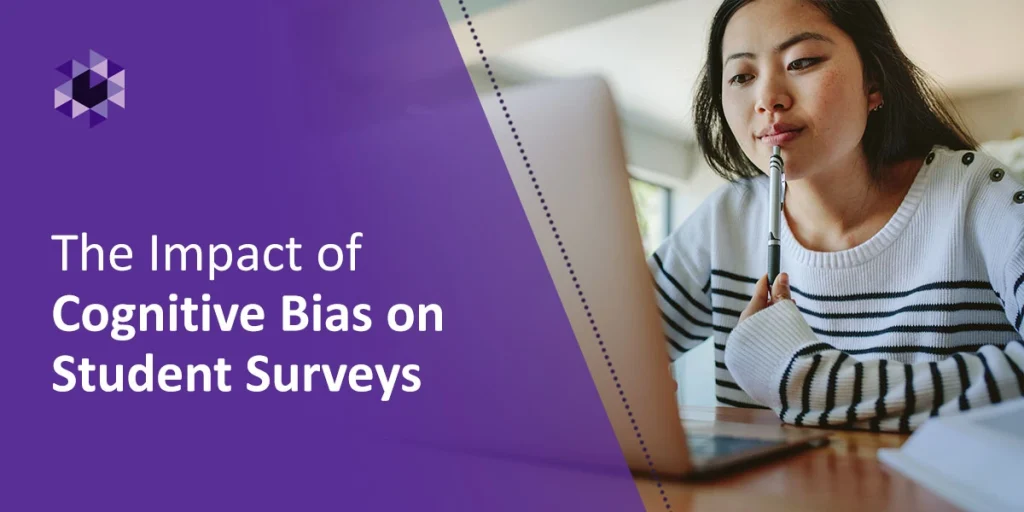
Survey response bias is a challenge for school administrations when collecting accurate data. However, understanding the types of bias in student surveys and course evaluations can help you learn how to avoid them, creating more precise and dependable research for your higher education institution.
Cognitive bias is the subconscious decisions and judgments we make every day. Because cognitive bias is subconscious, we are unaware of how it shapes our decisions, making actions influenced by cognitive bias unintentional.
This type of bias originates from the brain’s attempt to process and understand all the information it receives every second. Psychologists estimate that every second, our brains receive around 11 million bits of information, but we can only process about 40 pieces of information. Because of this, the human brain creates mental shortcuts to filter information and allow the brain to remain in the present. These mental shortcuts often cause cognitive bias, affecting several brain functions, like memory and attention.
In contrast to cognitive bias, conscious bias is when people make decisions or judgments and know how their opinions and beliefs result in their actions, behaviors, and attitudes. Conscious bias is an essential aspect of formulating a sense of self and identity within a community. Since both go into decision-making and judgment, they both impact survey results. However, since cognitive bias is unconscious, it comes with unique challenges requiring researchers’ awareness.
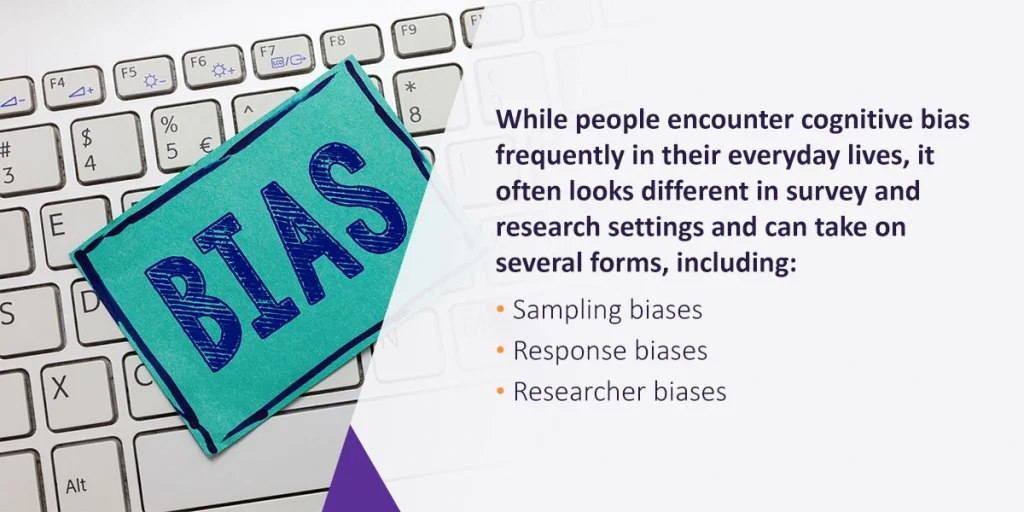
When conducting course evaluations at your higher education institution, it is essential to understand what is cognitive bias in surveys and what it looks like. While people encounter cognitive bias frequently in their everyday lives, it often looks different in survey and research settings and can take on several forms, including:
Researchers need to understand where they can encounter bias in surveys to help protect the surveys’ validity and accuracy. Especially when looking for bias in course evaluations, a school’s administration can help avoid common researcher bias and be aware of how improvement suggestions might not be an accurate reflection of student needs.
Learning about cognitive and survey bias can help your administration better understand how responses may have linked preferences.
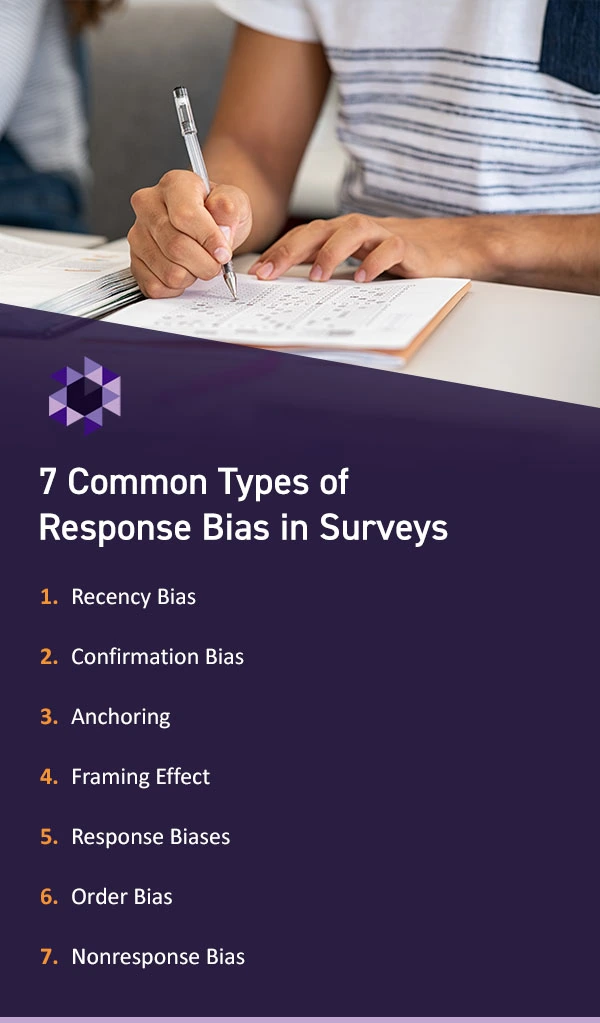
Cognitive bias takes many different forms in survey responses, which are essential for researchers and higher education administrations to understand as they collect survey responses. When evaluating your survey results, you will want to keep these types of response biases in mind to understand better how they may affect your results and analysis and discover how to avoid bias in surveys.
With recency bias, survey respondents will emphasize recent events rather than older ones, even if older ones are more relevant or impactful than current ones. This occurs because the brain remembers recent events better than older ones, allowing people to feel more confident about their responses when talking about a recent event.
Because we receive so much information every second, our memory has flaws. Recency bias is one way that memory’s flaws show in surveys. If you include questions on your survey that ask your respondents to recall events, you will want to consider these biases when analyzing your results. Recency bias in course evaluation surveys may look like asking students to reflect on the semester and students responding in a way that only represents the past couple of weeks, creating less accurate data.
Confirmation bias is one of the more common forms of cognitive bias in surveys and primarily affects researchers and data analysts. Confirmation bias occurs when people receive new information and use it to confirm their existing opinions or beliefs. However, it often manifests in people ignoring information that contrasts their views and ideas, allowing them to continue receiving confirmation from information that supports their ideologies.
In research, confirmation bias typically looks like researchers intentionally ignoring specific information to get the results that support their initial hypothesis or receive the desired response. When conducting surveys, it is essential for faculty and administrators to be aware of confirmation bias when evaluating survey results to ensure they gather accurate data reflecting the given answers. In course evaluation surveys, administrators may ignore undesired student feedback in favor of responses that support the changes they already want to make.
However, many people experience confirmation bias every day and outside of research settings, and researchers should be aware of this too. People receive information across various platforms every day — including social media, which often uses algorithms to tailor feeds to match beliefs and interests. Because of this, people often believe the information presented to them as fact because it supports something they already believe.
While many types of response bias come from external and personal responses, how you frame and order questions can also impact biased responses. Anchoring bias occurs when people face multiple options when making a decision and base their judgment and understanding on the first factor they encounter, also called the anchor. Like confirmation bias, people face anchoring bias daily.
For example, people often face anchoring bias when shopping. If they are searching for a specific object, like a new coat for the winter, they will use the price of the first coat as their baseline for all other coats they encounter while shopping. While many people see this method as helpful for finding a good deal, the first object they encounter might not properly reflect the market value or may cause them to overlook other factors, like quality.
In surveys, anchoring can impact people when presenting them with too many choices. Instead of giving each question their full attention, they may overlook or ignore information, leading to results that don’t properly reflect their opinions or beliefs. Instead, they base their responses on an anchor response or factor, determining how they answer all other questions. In course evaluation surveys, asking students about all their classes on one questionnaire can result in them picking one course as their anchor for their responses.
When writing higher education surveys, you can help lessen and understand response bias by examining how you frame and present information in questions. Framing questions can lead people to answer a specific way on surveys, causing higher chances of bias in results.
The framing effect significantly impacts criminal investigations and judicial processes. If police or lawyers frame questions in a way that leads respondents to the answer they want, judges can throw out responses and information because they exemplify framing effect bias.
When developing your surveys, you can help prevent researcher-level bias and the framing effect by watching how you frame questions and ensuring they can lead respondents to answer how they wish. Framing in course evaluation surveys may look like asking students if they believe they were highly satisfied with their course instead of asking them to rank their satisfaction.
Response bias can come from how researchers and administrators frame and order questions, but to prevent bias on their end, they should understand that respondents can also have bias. When answering surveys, individuals can experience many types of response bias, including:
In higher education surveys, the school administration may ask students to measure their satisfaction with their courses and professors. However, response bias can lead students to respond using only extreme or neutral options, decreasing the accuracy and making it harder for administrators to judge course and professor performance. Researchers can do their best to prevent response bias through careful question framing, ordering, and wording. However, since respondents have their cognitive biases, researchers should be aware that survey answers will still have some bias.
Also called the response order effect, order bias is similar to the framing effect. Instead of being about question wording and premise, it involves how researchers order questions together. Under the order bias, respondents will answer questions differently if researchers order the questions differently.
For example, if a survey asks students how happy they are with their academic program and then follows up with how happy they are with their professors’ performance, they may answer the second question differently than they would have if researchers placed the second question elsewhere. The placement may lead students to link their program with their professors, and even if they feel differently about their professors, they may answer with this link in mind.
Nonresponse bias is sampling bias and how researchers understand their sample group. While you may target your survey to all desired demographics and take the proper measures to ensure you are reaching them all, there is no guarantee that respondents will take your survey.
Many researchers think there is something fundamentally different about the people who don’t respond and put a lot of effort into understanding those reasons. However, people have many reasons for not wanting to take surveys, ranging from not having the time or interest to worrying about response anonymity. Instead, researchers should focus on understanding their respondents and their answers.
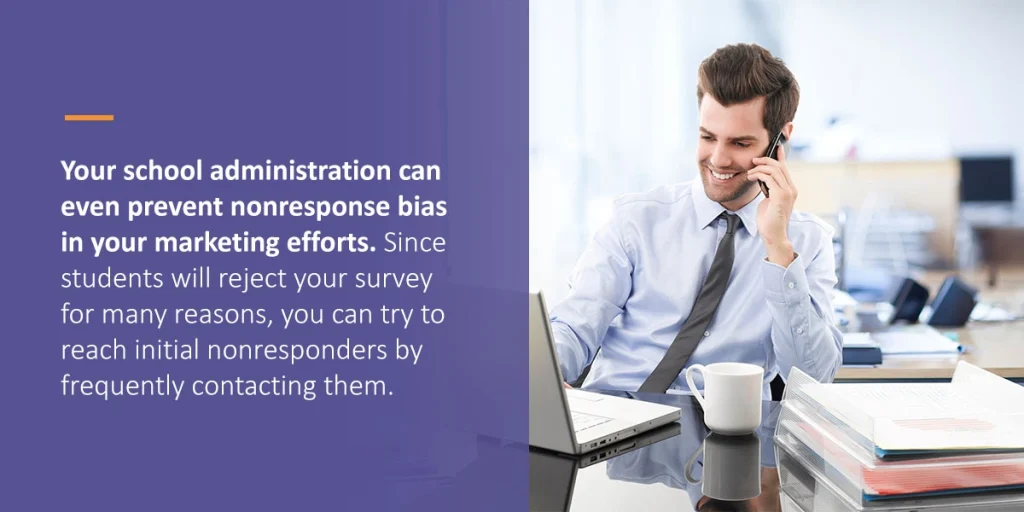
Avoiding cognitive bias can make it challenging for school faculty members to create effective course evaluation surveys. However, you can use many tips for determining how to avoid bias in a survey, including:
Your school administration can even prevent nonresponse bias in your marketing efforts. Since students will reject your survey for many reasons, you can try to reach initial nonresponders by frequently contacting them. Students who didn’t have time or forgot about the survey the first time can have the opportunity to take it. Further, offering incentives like raffle entries can motivate students to take the survey, helping reduce nonresponse in your course evaluation bias.
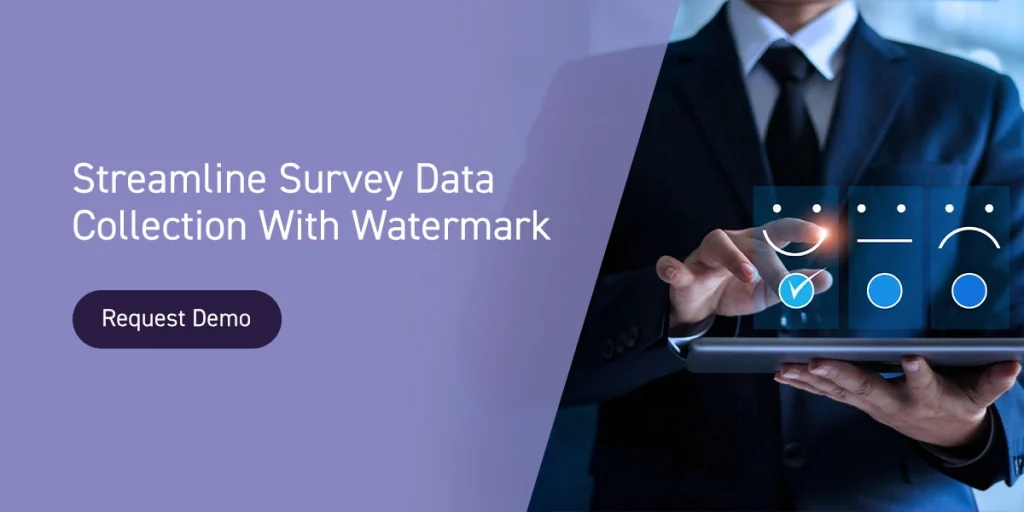
At higher education institutions, course evaluations and student feedback are vital for faculty to understand where to implement improvements for upcoming semesters on the course level. Ensuring your assessments and surveys have minimal bias can help strengthen survey data and insights. While understanding the types of bias occurring is essential, you can also implement more neutral habits into your survey to prevent bias.
Our Course Evaluations & Surveys platform helps you easily and efficiently collect crucial information about your courses. Our software rapidly collects data by integrating it into your resources, so you don’t need to input information manually. Further, we design our software specifically for higher education faculty and administrators and streamline your many processes for more efficient planning and implementation.





























































































































































































































































































































































































